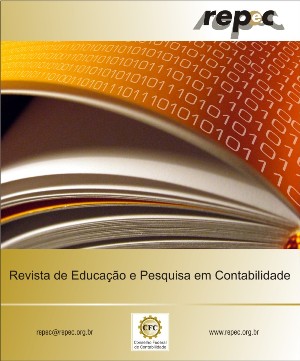Content classification of accounting documents using machine learning: The relevant facts case
DOI:
https://doi.org/10.17524/repec.v4i2.199Keywords:
Machine learning, Bayesian learning, Relevant facts, Content analysisAbstract
The analysis of narrative texts content has been more often studied in recent years. In several works research is noticed in relation to readability, comprehensiveness and level of optimism, pessimism or neutrality. However, the classification analysis regarding their optimistic, pessimistic or neutral trends has been proven burdensome, because it demands human analysis of texts, justifying the creation of more rapid and objective text analysis procedures, besides the attempt to reduce subjectivity. Therefore, the objective of this work is to propose an automatic classification of the accounting relevant facts , by making an analysis of narrative texts content using computational tools for text reading and classification. The idea is to try to contribute with an example of machine learning application to Accounting Science. The analysis in this work used relevant facts previously analyzed in the study by Pereira and Silva (2008). The already classified facts were used as training set for the program, so that it could classify other unknown and not-classified data.Downloads
Published
How to Cite
Issue
Section
License
Copyright (c) 2010 Journal of Education and Research in Accounting (REPeC)

This work is licensed under a Creative Commons Attribution 4.0 International License.
Authors who publish with this journal agree to the following terms:
Authors retain copyright and grant the journal right of first publication with the work simultaneously licensed under Creative Commons Attribution 3.0 Unported License, which allows the sharing of the work and recognition of authorship and its initial publication in this journal. This license allows others to distribute, remix, adapt, or create derivative works, even for commercial purposes, provided credit is given for the original creation.
b)There is no financial compensation to the authors in any capacity, for articles published in RePEc.c) The articles published in RePEc are the sole responsibility of the authors.
